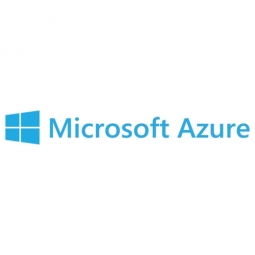Amazon Web Services
轻松安全地将设备连接到云端。---nasdaq--amzn_14.jpg)
概述
公司介绍
Amazon Web Services 开发了托管云平台 AWS IoT,让连接的设备可以轻松、安全地与云应用程序和其他设备进行交互。 AWS IoT 可以支持数十亿台设备和数万亿条消息,并且可以可靠、安全地处理这些消息并将其路由到 AWS终端节点和其他设备。借助 AWS IoT,您的应用程序可以随时跟踪您的所有设备并与之通信,即使它们未连接。
在这个平台之上,AWS 还提供了由 AWS 或第三方供应商提供的各种分析解决方案,可以帮助满足与数据分析相关的各种需求。
物联网解决方案
AWS IoT 设备网关使设备能够安全有效地与 AWS IoT 通信。设备网关可以使用发布/订阅模型交换消息,该模型支持一对一和一对多通信。借助这种一对多的通信模式,AWS IoT 使连接的设备可以向给定主题的多个订阅者广播数据。设备网关支持 MQTT 和 HTTP 1.1 协议,您可以轻松实现对专有或旧协议的支持。设备网关可自动扩展以支持超过十亿台设备,无需配置基础设施。
主要客户
NASA JPL、飞利浦、Sonos
物联网应用简介
Amazon Web Services 是基础设施即服务 (iaas), 平台即服务 (paas), 应用基础设施与中间件, 分析与建模, 和 网络安全和隐私等工业物联网科技方面的供应商。同时致力于航天, 教育, 电网, 电子产品, 食品与饮料, 药品, 可再生能源, 零售, 电信, 运输, 和 公用事业等行业。
技术
用例
功能区
行业
服务
技术栈
Amazon Web Services的技术栈描绘了Amazon Web Services在基础设施即服务 (iaas), 平台即服务 (paas), 应用基础设施与中间件, 分析与建模, 和 网络安全和隐私等物联网技术方面的实践。
-
设备层
-
边缘层
-
云层
-
应用层
-
配套技术
技术能力:
无
弱
中等
强

Supplier missing?
Start adding your own!
Register with your work email and create a new supplier profile for your business.
实例探究.

Case Study
Case Study: Pfizer
Pfizer’s high-performance computing software and systems for worldwide research and development support large-scale data analysis, research projects, clinical analytics, and modeling. Pfizer’s computing services are used across the spectrum of research and development efforts, from the deep biological understanding of disease to the design of safe, efficacious therapeutic agents.

Case Study
The Kellogg Company
Kellogg keeps a close eye on its trade spend, analyzing large volumes of data and running complex simulations to predict which promotional activities will be the most effective. Kellogg needed to decrease the trade spend but its traditional relational database on premises could not keep up with the pace of demand.

Case Study
NASA/JPL's Mars Curiosity Mission
NASA's Jet Propulsion Laboratory wanted to share the launching of Curiosity with fans by providing up-to-the-minute details of the mission. Supporting hundreds of thousands of concurrent visitors to the website would have been very difficult since NASA did not have significant web and live video streaming infrastructure.

Case Study
Vodafone Hosted On AWS
Vodafone found that traffic for the applications peak during the four-month period when the international cricket season is at its height in Australia. During the 2011/2012 cricket season, 700,000 consumers downloaded the Cricket Live Australia application. Vodafone needed to be able to meet customer demand, but didn’t want to invest in additional resources that would be underutilized during cricket’s off-season.

Case Study
ACTi Case Study
ACTi recognized the potential for cloud-based IP video surveillance and realized that cloud technology could help customers avoid the cost of deploying large physical infrastructures and maintaining a team of security professionals. ACTi wanted toseize these opportunities and make cloud-based solutions available to companies of all sizes.The company started developing a cloud-based surveillance and big data analytics system, but ran into technical difficulties. These challenges disrupted the company’s own plans to switch its internal systems from on-premises to a cloud-based platform. It had no option but to find a cloud-service provider since the situation limited growth potential and the organization’s ability to reduce operating costs.Peter Wu, sales director at ACTi Corporation, says the company was dedicating an increasing amount of budget to support a 20 percent increase in data per year. “We wanted a cloud-based solution to reduce our IT overhead, but the priority was to develop our cloud-based IP video surveillance solution to drive our market share worldwide,” he says.

Case Study
Centrica Connected Homes
With the acquisition of hardware and platform partner, AlertMe, in 2015, Centrica Connected Home was faced with the prospect of a significant shift in focus. Previously the relationship had been one of vendor-customer with AlertMe also pursuing it's own goals for expansion and licensing of its software. After the acquisition, Centrica Connected Home moved to quickly integrate the technical talent from the two companies and then to realign the development efforts of the teams.The new common goals of product evolution, feature enhancement and international launch, presented a number of challenges in the form of a rapid scaling requirement for their live platform, whilst maintaining stability and availability. Added to these demands on the company were an expansion into new markets, and brand new product launches, including smart boiler service and a growing ecosystem of new Hive smart home devices. They even found the time to develop deeply functional Alexa skills for their products and hence be a Smart Home Launch Partner for the Amazon Echo in the UK in 2016.

Case Study
Brooks Brothers' Solution Hosted By AWS
Brooks Brothers frequently launches new business initiatives, which helps the company stay competitive in the retail industry. The organization needed a more agile way of quickly testing these new projects. “When we embark on a new initiative, as with anything in the retail industry, it has a short timeframe from the initial idea to solving business needs, as driven by consumer preferences,” says Philip Miller, director of infrastructure and technical engineering at Brooks Brothers. “We’re very good at deploying technology that will exist for the long term in our data center, but we’ve struggled to spin up resources for testing new projects. We wanted to become more agile in moving concepts into an environment we could easily access and possibly move into production.”The organization was also seeking a more cost-effective way to manage its SAP HANA in-memory database management system, which would support a new customer relationship management (CRM) application. “We wanted to save money when we implemented the CRM system on SAP HANA, and we also wanted to be able to test out new projects on that platform,” says Miller.

Case Study
Atlassian's Solution on AWS
At Atlassian, growth is on a fast track. The company adds more customers every day and consequently needed an easy way to scale JIRA, which is growing by 15,000 support tickets every month. The instance supporting this site was previously hosted in a data center, which created challenges for scaling. “The scale at which we were growing made it difficult to quickly add nodes to the application,” says Brad Bressler, technical account manager for Atlassian. “This is our customer-facing instance, which gathers all the support tickets for our products globally. It’s one of the largest JIRA instances in the world, and growing and maintaining it on premises was getting harder to do.” For example, the support.atlassian.com instance was hosted on a single on-premises server, which the company needed to frequently take down for maintenance.The company also needed to ensure high availability for JIRA. “This is a mission-critical application, and the number of customers potentially impacted by downtime is huge,” says Neal Riley, principal solutions engineer for Atlassian. “As we grew, we became more concerned about the resiliency and disaster-recovery capabilities of the data center.”To move into a more scalable, highly available environment, Atlassian created JIRA Data Center, a new enterprise version of the application. However, JIRA Data Center required shared storage. “We needed a shared file system so the individual application nodes could have a shared source of truth for profile information, plug-ins, and attachments,” says Riley.

Case Study
AWS helped Haven power increase their database ability
Haven’s focus on customer service has fuelled a rapid level of growth since its launch in 2006. For its first five years, the company ran on a hybrid infrastructure that was made up of a mixture of onsite and offsite servers. Haven’s systems were not as flexible as it would have liked, with limited support for technology testing and development. The company lacked a complete business continuity and disaster recovery (DR) plan, and needed a technology infrastructure that could both keep up with demand and help drive further growth.Haven had three options: getting a DR solution through the data center of its parent company, Drax Group; going through a third-party re-location disaster recovery service; or moving to the cloud.

Case Study
The Dow Jones' Solution on AWS
Investors use Dow Jones to learn about what’s happening in financial markets throughout the world. “Our mission is to shine a light on dark corners of the world, focusing on news that impacts decision making,” says Stephen Orban, Chief Information Officer & Global Head of Technology. The company relies on cutting-edge technology to keep its customers as up to date as possible on the latest news.In Asia, about 12.8 million people use WSJ.com, which generates about 90 million page views each month. When the lease on its Asian data center ran out in early 2013, the company needed to find an alternative that would help its developers focus more on revenue-generating applications instead of on data center maintenance. Dow Jones also wanted to reduce latency for its Asia-based customers—and it wanted to avoid delays for acquiring and configuring hardware. “My preference is to have my team build products rather than running data centers, Orban says. “Now that data center is a commodity, that’s exactly what they’re able to do.”

Case Study
Reducing Simulation Cost to Become More Competitive
Like many aerospace engineering firms, TLG employs STAR-CCM+, a leading industry application, to perform CFD simulations. TLG uses the application to conduct aerodynamic simulations on aircraft and predict the pressure and temperature surrounding airframes. However, the company wanted to reduce the costs associated with running simulations. “We were using a cloud provider to host our simulations, but the cost per simulation was high,” says Andrew McComas, engineering manager at TLG Aerospace. “Running a typical simulation was costing us hundreds of dollars per case, and there may be hundreds of cases per project.”TLG also wanted the ability to scale its high-performance computing (HPC) applications to take on larger simulations. “The trend in our industry is toward doing more complex simulations that require more compute resources,” McComas says. “But with the internal HPC cluster we were using, we were limited as far as the maximum size problem we could run. We were limited to a small number of nodes and couldn’t allocate enough memory to run large-scale problems.”Because it wanted to reduce costs and gain scalability, TLG decided to search for a new cloud provider.

Case Study
Amazon helped an American energy company
Based on a program need to build a collaborative data repository for the Marine Hydrokinetic Program, NREL wanted to build a secure, yet collaborative, platform to collect, curate, store, and share moderately sensitive data, which focuses on water power research. As part of this effort, NREL built an environment with a Moderate Authority to Operate (ATO) accreditation from the Federal Information Security Management Act (FISMA). With a FISMA Moderate ATO, NREL maintains all mandated cyber security requirements, while gaining the ability to manage and share moderately sensitive data with other government agencies and research entities.As it prepared to design the new infrastructure, NREL knew it needed agility and flexibility. “Our goal was to make it easy for analysts and scientists to access and publish data, but we didn’t want to spend our time managing infrastructure to facilitate that. We want to focus on the product—the data itself,” says Webber. For example, NREL uses a dev-ops team approach focused on the needs of the client and ensures that the research metadata is optimized for accessibility. “We need to make sure the right descriptors and keywords are there so we can easily connect our users to all the other research sites,” says Jon Weers, senior web strategist at NREL. “If the data isn’t discoverable, it’s not useful to researchers.”

Case Study
Transforming Data Accessibility and Analytics for Government Agencies: A Case Study on Socrata and AWS
Socrata, an Advanced Technology Partner in the AWS Partner Network (APN), often encountered customers struggling to unlock data from siloed, difficult-to-access systems and put it into a self-service accessible platform. This was crucial for strategic use of data in delivering program outcomes. A prime example was the Utah Department of Transportation (UDOT), a Socrata customer, which had difficulty using data and analytics in its daily work due to limited access to their business intelligence (BI) software. Only a small group of employees had access to the BI tool, leading to delays in simple tasks like changing a color on a graph. UDOT needed to consolidate different systems and provide more people with access to information and basic analytic tools. This was particularly important as UDOT relied on updated data to secure funding for projects from the state legislature.

Case Study
AWS Partner Story: IT Era
IIIEPE was looking for a faster, less expensive approach for deploying Moodle-based online learning environments that would still enable the Institute to meet high service standards.IIIEPE evaluated firms that could assist with this project and decided to work with IT Era.

Case Study
Salesforce DMP Leverages AWS for Efficient Data Processing and Enhanced Customer Engagement
Salesforce DMP, a leading data management platform, is embedded within every digital interaction between its clients and their consumers. It collects, stores, and makes every piece of audience data continuously available to its clients, managing more than 10 petabytes of on-demand data. This comprehensive data collection approach provides clients with greater accuracy and sophisticated segmentation for targeting and analytics. However, this approach puts enormous demands on the Salesforce DMP system to quickly and efficiently process massive quantities of data. Fast performance and unlimited scaling capacity are crucial to deliver both real-time personalized experiences to consumers and data-driven insights to clients. Salesforce DMP needed tools to ensure it could deliver high return on investment to its clients while continuously developing and bringing new platform features to market.

Case Study
AWS Partner Story: Salesforce DMP
Salesforce DMP collects, stores and makes every piece of audience data continuously available to its clients, managing more than 10 petabytes of on-demand data.This approach, however, puts enormous demands on the Salesforce DMP system to quickly and efficiently process massive quantities of data. Salesforce DMP needed tools to ensure it could deliver high return on investment to its clients while continuously developing and bringing new platform features to market.

Case Study
AWS Partner Story: IT Era - Transforming Education with Cloud-Based Learning Environments
IT Era, an Advanced Consulting Partner in the AWS Partner Network (APN), often works with public-sector clients who face challenges such as tight budgets, small IT departments, and time-consuming procurement rules. One such client was the Instituto de Investigación, Innovación y Estudios de Posgrado para la Educación (IIIEPE), a publicly funded institute in Mexico that promotes innovation in education through research, technology development, strategic planning, and professional development programs. Until 2015, IIIEPE hosted all its online training programs on Moodle, a free and open-source learning management system, in an on-premises data center. However, when IIIEPE was given the opportunity to assist the Mexican Public Education Secretariat in providing a new platform for online courses for a national professional development program for high school teachers, they faced a challenge. Their on-premises data center was at capacity and setting up a new learning platform would have required procuring, configuring, and securing new physical servers, which would have been time-consuming and costly.

Case Study
Yieldmo Leverages AWS for Real-Time Ad Engagement Data Delivery
Yieldmo, a mobile-advertising marketplace, was facing a challenge in enhancing its measurement of user interactions for its ad campaigns. The company needed to capture user behavior in real time, across each ad pixel for billions of ad impressions at millisecond granularity. This was crucial for their sessionization process, which involved the collection of user interactions, known as micro-interactions, performed on Yieldmo’s ad units within a user session. The company was also planning to launch a new data platform that would provide in-depth insights into customer engagements. However, capturing hundreds of billions of micro-interactions presented a technical challenge as it would increase the number of requests coming in and require adding many more proxy servers to capture and analyze all these events. Implementing a traditional solution would be time-consuming, expensive, and require a large amount of storage and compute power.

Case Study
AWS Partner Story: Socrata
The Utah Department of Transportation (UDOT), a Socrata customer, had struggled to use data and analytics in its daily work because only a small group of employees had access to their business intelligence (BI) software.The organization needed to consolidate different systems and give more people access to the information and basic analytic tools.

Case Study
Yieldmo Uses AWS to Deliver Ad Engagement Data in Milliseconds
Yieldmo needed to deploy this solution quickly because it wanted to include sessionization capabilities in its soon-to-be-launched data platform.Plans for the capabilities of the new platform included in-depth insights into customer engagements, making campaigns more effective for advertisers, more profitable for publishers, and, ultimately, more relevant for consumers.
Case Study
iRobot's Transformation: From Hardware Vendor to IoT Cloud Application Leader
iRobot, a global consumer robot company, faced a significant challenge in 2015. The company had sold 14,000 of its Roomba robotic vacuums on the first Amazon Prime Day, highlighting its reputation for innovation and value. However, this success also underscored a looming challenge. In September, iRobot was set to release its first internet-connected Roomba vacuums. Until then, iRobot had primarily operated as a hardware vendor. The introduction of connected Roomba vacuums meant that large numbers of people would be using the iRobot HOME App to set up and control their robots. This would result in high volumes of traffic through the app, requiring iRobot to run a high-availability, customer-facing cloud application and an Internet of Things (IoT) backend platform. This was a significant shift from their traditional business model and posed a considerable risk.
Case Study
Digital Transformation of Haymarket Media Limited with AWS
Hong Kong-based Haymarket Media Limited, a leading media specialist publisher, was facing the challenge of building a digital strategy to offset the decline in print. The company needed to analyze customer behavior online to understand what stories were being read and how recipients were interacting with their email messages. The goal was to make content more relevant by understanding how customers were engaging across multiple digital channels. The challenge was to build an analytics platform, Haymarket Piccolo, to provide customer insight. However, the infrastructure costs of running digital and technology solutions from an on-premises collocation site were becoming a concern. The company needed an alternative solution to run its analytics platform that could scale at low cost as the platform ingested larger amounts of customer-related data.
Case Study
Hiiir Inc.: Scaling Digital Media Services with IoT
Hiiir Inc., a leading digital media company in Taiwan, faced significant IT challenges due to rapid growth in demand for its mobile marketing services. The company's on-premises solution was unable to keep up with the need for quick scalability. The procurement cycles for on-premises infrastructure were lengthy, reducing the company's agility and complicating budgeting as IT had to project its spend many months in advance. Furthermore, Hiiir lacked the necessary facilities to house a large datacenter and did not have enough IT staff to ensure optimal performance. The company needed a solution that would allow them to scale their computing capacity as needed to support their services, a requirement that could not be met with an on-premises solution.
Case Study
Hudl Leverages AWS to Enhance Video Upload and Analytics Platform
Hudl, a software provider offering a video and analytics platform for sports teams, was facing a number of challenges. The company was experiencing significant business growth globally, with an increasing number of sports teams using their services to upload game video. This growth, at a rate of about 30 percent every year, required scalability to support and maintain. Additionally, Hudl was striving to provide faster video upload speeds to its customers. Many coaches were requesting quicker video uploads and faster access to videos for analysis. This posed a logistical challenge due to the large video files being moved over long distances. On a typical Friday night in high school football season, Hudl was uploading 39 hours of video every minute for encoding and processing. Lastly, Hudl was seeking a better analytical platform for internal data analysis. Their self-built data warehouse was complicated, expensive, and underperforming.
Case Study
Innovative Cloud Migration: A Case Study of innogy Czech
innogy Czech, a leading European energy company, was faced with the challenge of migrating its mission-critical SAP systems to a new location after the closure of its data center in Brno, Czech Republic due to flood risk. The company had to decide between moving its SAP implementation to a new data center in Germany or migrating to the public cloud, which would align with the organization’s cloud-first strategy. The company’s IT team saw an opportunity to transform operations by moving to the cloud, not only to keep up with future business growth but also to take advantage of the agility, flexibility, and management efficiency of the cloud. The company saw the shift from capital expenditure to operating expenditure as another potential benefit. However, the migration process was fraught with challenges, including the need to migrate dozens of terabytes of SAP data, complete a replatforming of the Linux operating system and Oracle database, and convert the data to Unicode, all without negatively affecting business activities and customers.
Case Study
Amazon's Journey to Database Freedom with AWS
Amazon, despite being a leading-edge technology company, was still using Oracle databases for its data storage and management. The company was born before the advent of Amazon Web Services (AWS), during a time when monolithic, on-premises database solutions like Oracle were the norm for enterprise-scale data management. However, disengaging from Oracle presented significant challenges. Amazon had more than 5,000 databases connected to a variety of non-standardized systems, with ownerships and dependencies that were not centrally inventoried. There were also personnel-related risks, as many Amazon employees' careers were based on Oracle database platforms. Furthermore, Amazon engineers were spending excessive time on complex database administration, provisioning, and capacity planning. The company's rapid growth required more Oracle database shards, increasing operations and maintenance overhead. Additionally, continuing with Oracle would increase the millions of dollars Amazon was already paying for its license by a staggering 10 percent annually.
Case Study
Cloud-Based Learning Transformation at Cedars School of Excellence
Cedars School of Excellence, a small Scottish preparatory school with about 120 students and 20 staff members, is known for being the first school in the world to introduce a 1:1 iPad-based learning curriculum. However, the school faced challenges in managing its complex iPad deployment and delivering certain parts of the curriculum and testing due to incompatibility of some critical applications with the iPad. The school's IT head, Fraser Speirs, had previously decided to run the school's device-management server, Jamf Pro, on Amazon Elastic Compute Cloud (Amazon EC2) in 2013. Despite the benefits of this decision, the school still faced limitations in delivering certain parts of the curriculum due to the incompatibility of some applications with the iPad.
Case Study
FICO's Transformation: Leveraging AWS for Rapid Innovation and Cost Reduction
FICO, a leading predictive-analytics and decision-management software company, was facing challenges in rapidly developing and deploying its solutions, including its flagship FICO Decision Management Suite (DMS). The company, which provides services to 95 percent of the largest U.S. financial institutions, was traditionally an on-premises software company. This approach often resulted in years-long development and delivery timelines, hindering the company's ability to provide timely solutions to its customers. FICO wanted to focus on implementing its software rather than waiting for customers’ IT organizations to provision and build the underlying infrastructure for its solutions. Additionally, FICO needed to ensure strong security and compliance with Payment Card Industry (PCI), General Data Protection Regulation (GDPR), and other regulations in its operations.
Case Study
Globe Telecom's Successful Migration from Oracle to AWS: A Case Study
Globe Telecom, a leading telecommunications service provider in the Philippines, was facing a significant challenge. The company was using Oracle applications in 90 percent of its services, but the cost was proving too high to maintain a competitive position. The company's IT team decided to shift towards the adoption of non-proprietary databases. However, the challenge was to find the best-fit open-source database and to ensure a smooth migration without any interruptions to service quality. Furthermore, Globe Telecom had to ensure that the new platform could handle telco-grade workloads, which are standard for the telecommunications industry but considered heavy in other sectors.
Case Study
Leveraging AWS for Enhanced Data Processing: A GumGum Case Study
GumGum, a leading provider of programmatic, native, and social analytics software solutions, was facing a significant challenge in managing its data. The company generates more than 1 billion events, equivalent to approximately 6 TB of data, every single day. This massive amount of data needed to be processed continuously to eliminate bottlenecks and expedite decision-making for customers. The company was in dire need of a solution that could scale quickly to handle the rapidly growing traffic and data. The challenge was not just about managing the volume of data but also about processing it in real-time to provide valuable insights to customers.
Case Study
Zillow Provides Near-Real-Time Home-Value Estimates Using Amazon Kinesis
Zillow Group, the owner and operator of the largest online real-estate and home-related brands, was struggling to provide timely and accurate home valuations, known as Zestimates, for all new homes. The company's in-house machine-learning framework, which ran on-premise to process vertically scaling workloads, was unable to scale fast enough to meet the growing amount of data and the increasing complexity of machine-learning models for accurate Zestimates. The company specifically sought a distributed platform, which would enable the fast creation and execution of massively parallel machine-learning jobs. The existing technology was taking too long to compute Zestimates, sometimes more than a day, which meant that customers weren’t getting updated information fast enough.
Case Study
HeartFlow's Transformation of Heart Disease Diagnosis and Treatment with AWS
HeartFlow, a medical technology company, is revolutionizing the diagnosis and treatment of heart disease with its non-invasive HeartFlow FFRct Analysis. This technology uses deep learning to create a personalized 3D model of the heart, allowing clinicians to better evaluate the impact of a blockage on blood flow and determine the best treatment. However, the company faced a significant challenge. Cardiovascular disease, the world’s leading cause of death, claims more than 17 million lives each year. The most common type, coronary artery disease (CAD), reduces blood flow to the heart, causing chest pain, heart attack, and death. Clinicians need to know if and where there is a blockage, and how it is affecting blood flow. This information is crucial in choosing the best treatment pathway for the patient, such as medical management, stenting or bypass surgery. However, the diagnostic coronary angiogram often used to detect CAD is invasive, expensive, and potentially risky. More than half of patients who undergo the test have no significant blockages, and the procedure can be associated with serious complications.
Case Study
Morningstar Uses AWS to Rapidly Create Online Investment Marketplace
In 2016, the U.S. Department of Labor announced upcoming rule changes that would hold brokers and other investment advisers to a “fiduciary standard,” meaning they would be legally required to act in the best financial interest of their clients. This shift would restrict the types of investments that could be selected for certain retirement plans. Morningstar, Inc. recognized an opportunity to help employers find investments that comply with the fiduciary rule through an easy-to-use, online marketplace named Morningstar Plan Advantage. The marketplace would explain the regulations, offer searching and filtering of compliant investments, and ease enrollment into these plans. APIs connected to the application would allow investment providers to push data into the marketplace. Morningstar hoped to deliver an outstanding experience for employers and investment providers, and build revenue by increasing sales of plans for which they provide administrative services.
Case Study
Movable Ink Gets Insights 50% Faster Using Amazon Athena
Movable Ink’s Intelligent Content Platform supports real-time personalization of email campaigns using up-to-date information from websites, social-media platforms, and APIs, as well as contextual data about device type, weather, recent user activity, and more. Additionally, it enables customers to analyze data about their users to make better marketing decisions. This process incorporates large and unpredictable amounts of data from a wide variety of sources, making the scale, elasticity, and connected nature of cloud services a logical fit. To meet these challenges, Movable Ink migrated its entire production environment to Amazon Web Services (AWS) in 2015, taking advantage of multiple regions and availability zones to provide redundancy, resilience, and scalability. In addition to the data and content used in personalized email messages, Movable Ink captures data on user behavior after users receive those messages, such as whether they opened the email, what items they clicked on, and what they browsed and purchased on websites as a result.
Case Study
Veracode Helps Developers Find Security Flaws Faster Using AWS
Veracode, a CA Technologies company, is on a mission to secure software applications so developers don’t release software that could be susceptible to breaches. As part of this mission, the company created Greenlight, a tool that helps developers discover and fix security-related defects while they are writing code. Because Greenlight is designed to find security flaws quickly, Veracode must ensure strong performance. “We need to deliver security vulnerability results in under a minute,” says Patrick Day, principal cloud engineer for Veracode. “If developers wait too long for the data, they’ll move on to a different product.” Veracode also needs to scale its solution to accommodate growth. “As we were building the application, we needed to plan for increases in code-scan volume,” Day says. As an application-development company, Veracode also strives to reduce the amount of time employees spend managing the IT environment. Day says, “We’re focused on developing and deploying products, so we don’t want to put our resources and energy into managing and provisioning.”
Case Study
Enhancing Photo Analytics Using AWS
Amplframe, a photography community platform in Taiwan, was facing challenges in managing the increase in website traffic, with 18,000 visits over a period of seven months. The company needed a solution that could efficiently handle the sudden spikes in website traffic during events or holidays. Additionally, they were looking for ways to enhance the user experience by reducing webpage loading time and increasing the website engagement rate.
Case Study
Firefly Boosts Student and Teacher Experiences in the AWS Cloud
Firefly Learning, an online tool for teachers, students, and parents, was initially deployed by installing its software on Windows servers locally at each school. This setup presented numerous challenges, as supporting schools largely consisted of solving problems with their underlying infrastructure, such as dealing with backup issues and domain name system failures. As more schools adopted Firefly, the issues multiplied. The software was installed on hundreds of servers, and the task of supporting them all became overwhelming. Firefly needed a solution that would help join up the learning experience and allow for easier and more efficient support and management.
Case Study
FuseFX Renders 1,000 Frames in One Hour Using AWS Thinkbox Deadline
FuseFX, a visual effects company, was facing a challenge of lack of compute power, specifically, finding enough nodes for the compute-hungry process of rendering computer-generated imagery (CGI). The company was growing quickly in terms of size and the scope of its creative ambitions. One of the responsibilities was ensuring that the capacity of the FuseFX content-creation pipeline grows right along with the rest of the company. The company needed a solution that could provide unlimited computing power, the ability to expand rendering nodes quickly, affordably, and essentially infinitely.
Case Study
Mirriad Delivers Next-Generation Ad Tech Using AWS
Mirriad, a London-based company, delivers next-generation advertising solutions by using its computer vision technology to naturally place brands in premium video content across TV, online, and mobile channels. The challenge for Mirriad was achieving this intelligent insertion of ads at scale. The company was initially using physical data centers, which proved to be a bottleneck when it came to onboarding big businesses. In addition to fast access to compute capacity, another vital requirement for the company was the ability to use NVIDIA GPUs across multiple regions worldwide.
Case Study
Fuelling Conversation: How Springworks got cars talking with SPARK and created an app that’s become a standard on Swedish phones
Springworks launched SPARK, a platform that lets car owners receive key data about their vehicles at the touch of a button, served straight from the cloud, direct to their smartphones. The platform also connects them with service providers that can sort any issues that might come up – from MOTs to tyre changes. However, each talking car generates about 10,000 data points per day. To handle 20 million cars, Springworks needed a system that could handle several billion data points in one go. They wanted limitless scale. In order to hit the market with a great new product, Springworks needed to be able to focus on innovation. When they started out, the release cycle as about 2 weeks for a new feature – but the team wanted to move faster. Finally, data security was a major concern. For a new market offer that was looking to partner with the big mobile networks, security couldn’t be an afterthought. It had to be built into the SPARK infrastructure from the start.
Case Study
Edmunds Saves $100,000 in Year One by Going Serverless on AWS
Edmunds, a company that helps consumers browse automobile dealer inventory, read vehicle reviews, and consume other automobile-related content, was planning a key update with better image quality and faster load times on the company's website and mobile apps. The company had a library of 50 million vehicle images that needed to be processed into several new aspect ratios and resolutions, resulting in more than half a billion new images. The company's existing image-handling solution, based on Cloudera MapReduce clusters, wasn't suitable for the job as it would have taken too long to develop and would have required the management of new clusters and incurred new monthly costs of at least $10,000.
Case Study
GE Healthcare Launches Health Cloud on AWS, Improving Collaboration and Patient Outcomes
GE Healthcare, a leading manufacturer and distributor of diagnostic imaging equipment, was seeking to improve patient outcomes by reducing workflow processing time through the sharing of medical image data across specialists and referring physicians. The company wanted to increase the value derived from device usage and data by enabling the leverage of cloud compute, storage, and access. The challenge was that up to 35 percent of patient cases were being misdiagnosed, partially due to a lack of access to images, data, and records. Additionally, better interoperability between systems could save healthcare ecosystems $30 billion per year, according to GE Healthcare.
Case Study
Trading with a One-Stop Digital Asset Platform
Modernity Financial Technologies, Ltd. was facing the challenge of supporting a rapidly growing user base on its digital currency exchange and investment platforms, MaiCoin and MAX Exchange. The company needed a solution that could easily scale to accommodate a 563% average monthly member growth rate and an 894% average monthly cryptocurrency exchange rate. Additionally, the company wanted to decrease its daily operational time and reduce costs.
Case Study
Matson Modernizes Shipping by Going All-In on AWS Cloud
Matson, a leading U.S. shipping carrier in the Pacific Ocean, embarked on a journey to modernize its entire portfolio of enterprise applications and to upgrade and optimize every corner of its IT infrastructure. The shipping industry requires advanced IT capabilities to enable precise tracking of assets and customer shipments as they move around the world. Matson’s vessels, shipping terminals, container equipment, and truck shipments all require highly reliable technology to ensure that its transportation network operates at world-class levels. In addition, Matson’s customers count on cloud-based applications to provide real-time visibility and analytics in managing their own supply chains.
Case Study
Vidsy Migrates to Amazon ECS in 10 days
Vidsy, a London-based company that helps brands develop mobile-first video campaigns, was facing challenges with Docker Cloud. The company had moved all its applications into Docker containers running on Amazon EC2 instances and automated the administration of the containers using Docker Cloud. However, they regularly had to deal with Docker Cloud software bugs and dedicate precious engineering resources to fixing the issues. Furthermore, Docker Cloud’s cluster management feature was going end-of-life and Vidsy needed an alternative.
Case Study
TerrAvion Uses AWS to Help Farmers Improve Crop Yields Through High-Resolution Aerial Images
Commodity-crop farmers across the United States often depend on satellite images of their fields to get an updated view of the health of their crops. However, the resolution of these images is not high enough for farmers to get the most accurate picture of their fields. In fact, for many specialty-crop growers, satellite images are somewhere between useless and misleading. TerrAvion is changing that. The company uses airplanes and drones to obtain full-frame and thermal images from high-resolution cameras. TerrAvion gives farmers, retailers, agronomists, and ag distributors the best possible pictures through OverView, the company’s core subscription service. “Our pictures offer resolutions of 9 or 18 centimeters per pixel, which satellite can’t do,” says Stephen Smith, CTO of TerrAvion. Using such high-resolution images, farmers can more accurately view the health of a plant.
Case Study
Building an IoT Solution Using Eseye and AWS to Provide Customers in East Africa with Secure Access to Solar Energy
SolarNow, a for-profit social business, provides solar energy products and financing solutions in East Africa. The company faced challenges in identifying common device pain points for customers and optimizing device longevity. As SolarNow’s customer base grew, the company began identifying areas for business growth and improvement. They noted pain points for customers, such as a short battery lifespan or inefficient solar panel usage, that they felt they could proactively address and prevent these issues using Internet of Things (IoT) technology to build a connected device and monitoring solution. SolarNow needed to be able to enhance access to and use of device data to remotely monitor system performance and alert customers of inefficient device usage.
Case Study
Zignal Labs Performs Next-Level Sentiment Analysis Using Amazon SageMaker and Amazon EC2
Zignal Labs, a company that helps its customers measure brand impact, mitigate reputation risks, and inform data-driven communications strategies, wanted to take existing sentiment classification techniques to the next level with a focus on reputation polarity. The company wanted to offer a solution that identifies the actual positive or negative impact of online content on a brand. Zignal Labs was all too familiar with the limitations of third-party sentiment-analysis solutions, having experimented with many of them itself. Some of these tools presented problems around scalability, and some weren't well suited to all the different media sources Zignal needed to track.
Case Study
AWS Partner Story: Stonehenge NYC & Klika Tech – Bringing the Apartment of the Future to Today’s Tenants
Stonehenge NYC, a private real estate group, was facing challenges with its outdated rental approval process and other tenant-related services. The company wanted to differentiate itself in the market by becoming technology-driven to drive efficiencies throughout its entire organization that result in a better customer experience. The team turned to Salesforce, a Customer Relationship Management (CRM) platform leader, to modernize the sales and leasing process. As the company continued to develop its Salesforce application and explore how new technologies, such as Internet of Things (IoT), would be key to its digital transformation journey, it chose to migrate its applications to Amazon Web Services (AWS).
Case Study
Spreading Joy Throughout the World, One Flower at a Time – Royal FloraHolland Uses Machine Learning on AWS to Evolve its Practices
Royal FloraHolland, a century-old company, recognized the importance of going digital to provide its growers and buyers with more opportunities. The company wanted to improve current processes and provide growers and sellers with new opportunities to reach buyers. The company recognized its need to reorganize in order to go digital and become more data-driven. Royal FloraHolland wanted to use other trading methodologies outside of the physical auction house to sell flowers. The company also wanted to improve the quality of the images that are presented at the auction and provide buyers with stock availability and alternative options tailored to their preferences.
Case Study
From Cows to the Cloud: How TINE is Revolutionizing the Norwegian Dairy Industry Using Machine Learning on AWS
TINE SA, a Norwegian cooperative owned by farmers, has been collaborating with Norway’s farmers for over 160 years to understand their challenges and help them drive efficiency, productivity, and high-quality dairy product development. As market demands increase, so does each farmer’s need to bring products to market more efficiently. TINE has a long history of developing decision-making tools for farmers and collecting data from different dairy products at the farm level. However, as TINE considered the future of dairy production at both the farm and national level, its data science team realized there would be changes to the breadth and depth of its data sources, types of data, and data analysis capabilities available to develop decision-making tools for farmers to use in production. TINE knew it would have to change its approach to data and technology by becoming more data driven as an organization to drive better predictability of milk production and other key data points related to a cow’s health and the quality of milk produced.
Case Study
Using Machine Learning on AWS to Eliminate Manual Contract Reviews
Companies experiencing rapid growth often lack the bandwidth to track each line of every contract, service agreement, or legal document before it’s executed. Even in the most carefully reviewed agreements, some information is forgotten as soon as the contract is signed. Once the business has matured and due diligence projects arise (for example, when a law changes or an acquisition takes place), companies must conduct detailed reviews of all signed contracts and identify specific terms within them. LinkSquares’ founders experienced the painful reality of reviewing existing legal contracts firsthand while their previous employer underwent an acquisition. The team identified existing software solutions helping companies efficiently address the pre-signature workflow: contract creation, terms negotiation, and internal workflow. However, the industry lacked a software solution to help companies mine for information in existing contracts.
同类供应商.

Supplier
IBM
IBM is an American multinational technology and consulting corporation that manufactures and markets computer hardware, middleware, and software, and offers infrastructure, hosting, and consulting services in areas ranging from mainframe computers to nanotechnology. IBM is intent on leading the development of a global data field.

Supplier
Huawei
Huawei is a global leader of ICT solutions. Huawei's strategy in the enterprise domain focuses on close cooperation and integration with partners to deliver a wide range of highly efficient customer-centric ICT solutions and services that are based on a deep understanding of customer needs. In line with their portfolio covers enterprise networking, unified communications & collaboration (UC&C), Cloud Computing & data center, enterprise wireless, network energy and infrastructure services.

Supplier
Microsoft
Microsoft develops, manufactures, licenses, supports and sells computer software, consumer electronics and personal computers and services. Its best known software products are the Microsoft Windows line of operating systems, Microsoft Office office suite, and Internet Explorer and Edge web browsers.Year Founded: 1975Revenue: $93.6 billion (2014)NASDAQ: MSFT

Supplier
Microsoft Azure (Microsoft)
Microsoft Azure is a Cloud Computing platform and infrastructure created by Microsoft for building, deploying, and managing applications and services through a global network of Microsoft-managed data centers. It provides both PaaS and IaaS services and supports many different programming languages, tools and frameworks, including both Microsoft-specific and third-party software and systems. Azure was announced in October 2008 and released on 1 February 2010 as Windows Azure, before being renamed to Microsoft Azure on 25 March 2014.




